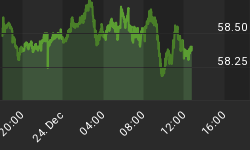Before trying to explain why interest rates can rise significantly during an inflationary boom, even when general price rises are modest, I shall first dispose of the myth that seems to have gained ground among the economic illiterati that using interest rates to curtail spending proved a failure during the 1980s boom and only resulted in interest rates rocketing into the 20 per cent range.
I clearly remember that from 1988 brilliant journalist after brilliant journalist whined that tight money wasn't working even though interest rates were climbing. (Quite recently Mathew Price of The Australian proudly wrote that only "the best and brightest" become journalists. I am still trying to find out if this arrogant twit is taking medication).
Let's get down to some basic facts. Under the chairmanship of the brilliant Bernie Fraser the Reserve Bank of Australia virtually abandoned monetary controls. (It really isn't much better now: since March 1996 to last September currency rose by 100 per cent, bank deposits by 143 per cent and M1 by more than 132 per cent). This policy of criminal neglect unleashed an avalanche of credit into the economy which triggered off an inflationary boom that eventually forced interest rates to rise. This rise convinced lazy journalists and incompetent media commentators that the Reserve must have tightened the money supply. After all, they reasoned, a tight money policy is always the cause of rising interest rates. No it ain't.
If these insightful media observers had been correct then the money supply would have tightened considerably during 1988-89. However, during this period currency grew by 30 per cent, bank deposits by 35 per cent and M1 by 30. It is obvious that credit expansion was rapidly expanding even as interest rates rose. Yet our so-called journalists were still writing that that the Reserve was running a tight money policy. No wonder credit to the private sector increased by $51 billion dollars from May 1988 to May 1989 -- 21 per cent increase.
(The monetary situation was even worse than these figures suggest. From March 1983, when Hawke won the general election, to December 1989 currency rose by 117 per cent, bank deposits by 135 per cent and M1 126 per cent. For the decade as a whole the respective monetary figures are 202 per cent, 173 per cent and 187 per cent. And yet I cannot recall a single member of our commentariat referring to actual monetary growth. Unfortunately the same blinkered outlook still applies today).
There is no disputing the fact that it is a myth that tight money gave us record interest rates. This invites the question of what made interest rates rise even as the money supply was rapidly expanding. It certainly could not have been a price premium given the wide gap between rates and inflation. The clue, I believe, lay on our cities' skylines, which were dotted with cranes and sprouting office blocks.
The Austrian school understands that forcing interest rates below their market rates ignites inflationary forces that induces overinvestment in certain stages of production. These excess investments (what Austrians call malinvestments) eventually appear as idle capital. The Austrians also point out that when capitalists make an investment it is on the expectation that the necessary complementary investments will also be available and that interest rates will remain within a certain range for some time to come.
Unless these conditions are met many projects will fail. As interest is not only the means of equating the supply of capital with the demand for capital but is also the instrument that allocates capital through time, so to speak, it is of particular importance. The proposition is that the demand for savings will depend on the extent to which the investment has been completed. Clearly, where projects have already advanced there will tend to be little response in demand to changes in interest rate, meaning that the demand for capital will be inelastic with respect to significant changes in interest rates.
Hayek demonstrated that if capitalists expected an interest rate of, for example, 4 per cent to be the norm they would continue under certain circumstance until interest rates rose to about 12 per cent. The reason why interest rates eventually rise, even in the absence of a price premium, is that because previous rates signalled that there is more capital available than actually exists, capitalists will find themselves in competition for a much smaller pool of savings. It is this competition that eventually drives up rates near the end of the boom. This clearly suggests that even were official interest rates to be kept artificially low interest rate to business would still rise*.
The above reasoning leads us to conclude that where the rate of interest has been driven down for a prolonged period the central bank might have to raise it significantly if it is to halt the resulting inflationary boom. I believe that this is the main reason why interest rates rose to unprecedented levels near the end of the 1980s boom even though money supply was still criminally slack. However, it should be borne in mind that there is no way in which anyone can calculate how much interest rates would have to rise to choke off a boom.
*Friederich von Hayek, Investment that Raises the Demand for Capital in Profits, Interest and Investment, Augustus M. Kelley Publishers, 1975, first published in 1937.
Hayek's Pure Theory of Capital, The University of Chicago Press, 1975.
Israel M. Kirzner's An Essay on Capital, Augustus M. Kelley Publishers, 1966
Richard von Strigl, Capital & Production, Mises Institute, 2000.
Ludwig von Lachman, Capital, Expectations, and the Market Process, Sheed Andrews and McMeel Inc., 1977.
Eugen von Bohm-Bawerk, The Positive Theory of Capital, book 6, chapter 5, Macmillan and Co, 1891.
















